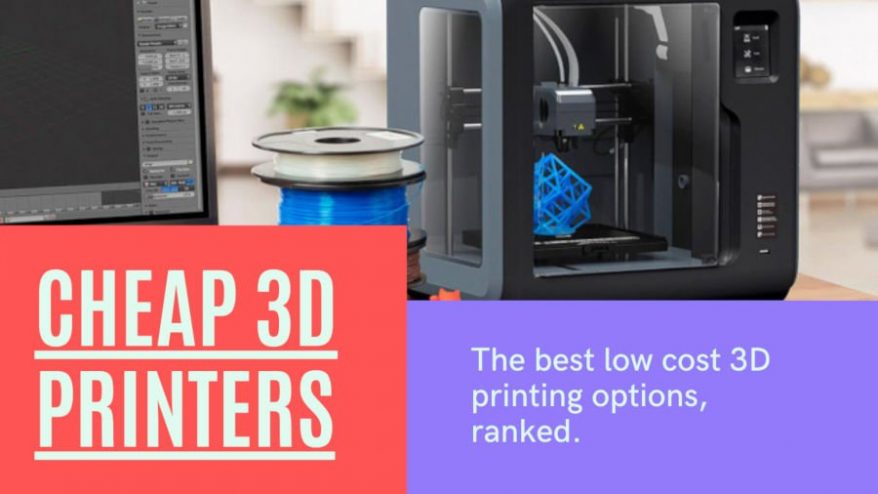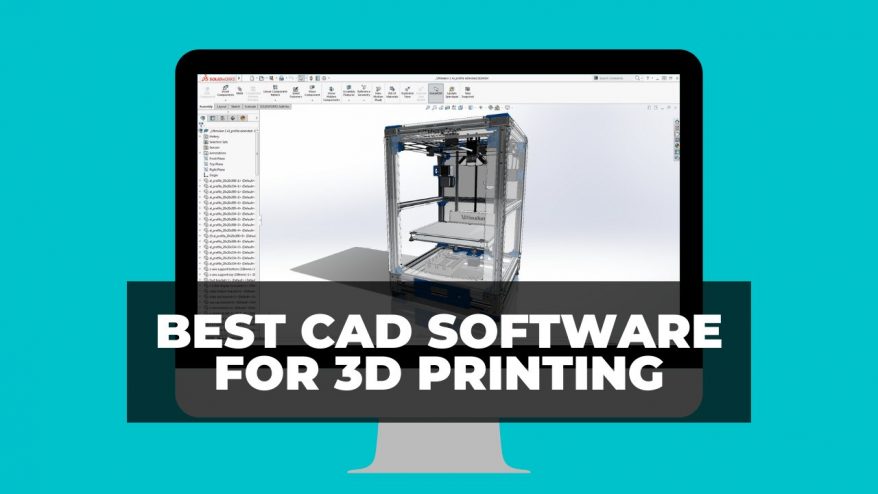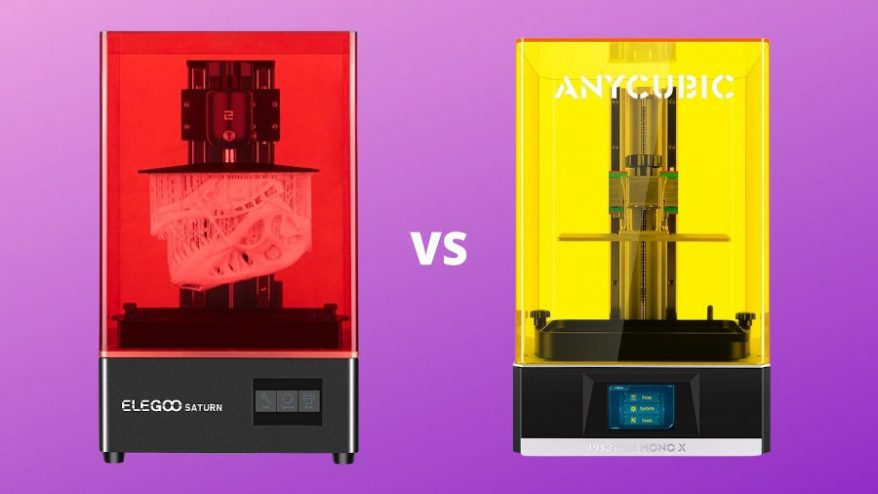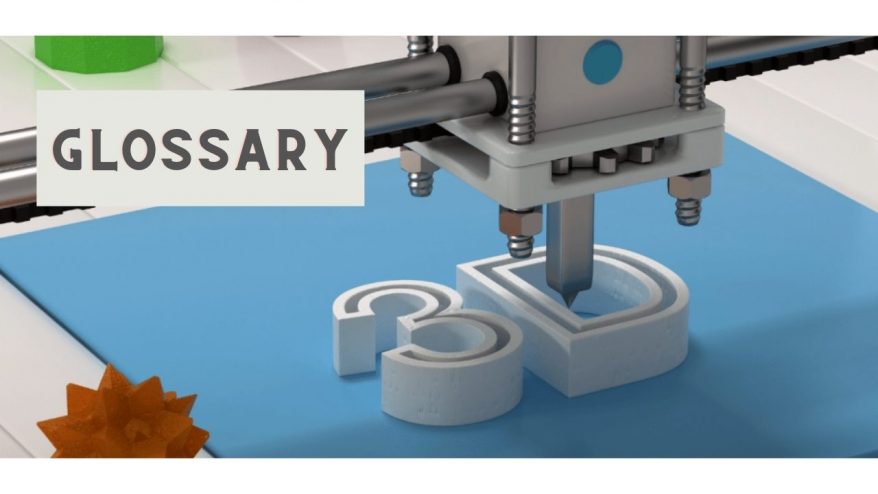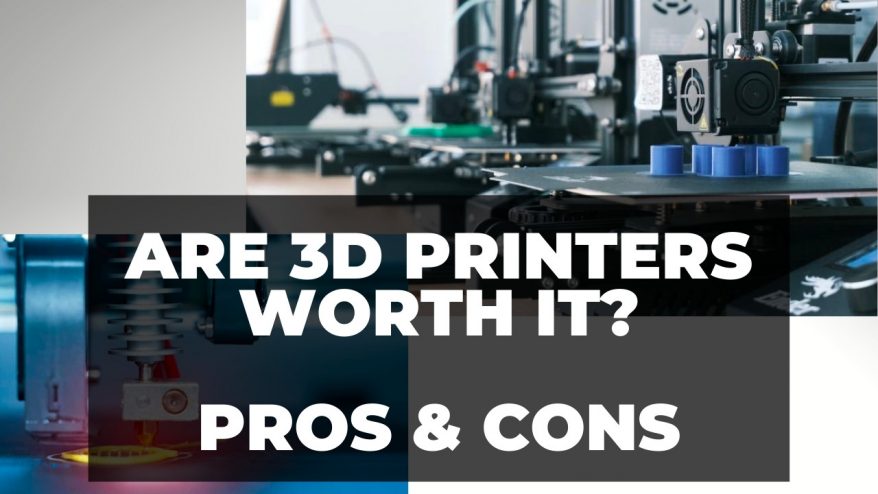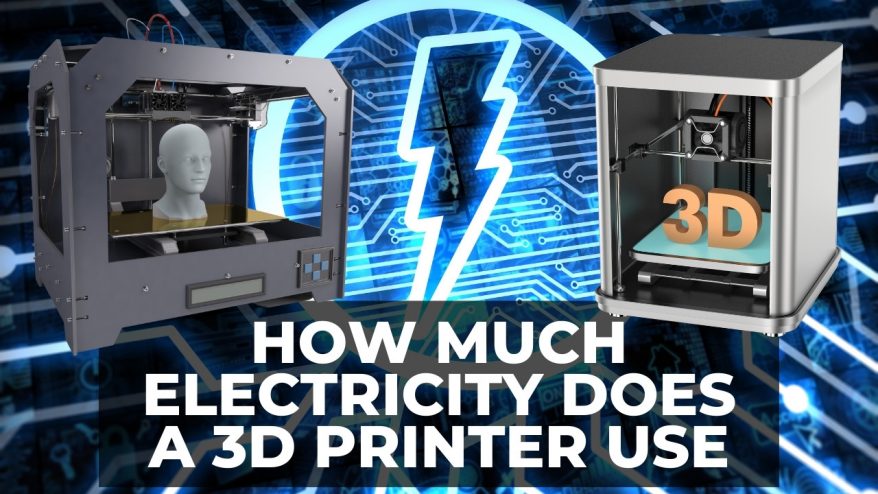
How Much Electricity Does A 3D Printer Use? [EXPLAINED]


At 3DSourced we’ve covered everything 3D printing and 3D since 2017. Our team has interviewed the most innovative 3D printing experts, tested and reviewed more than 20 of the most popular 3D printers and 3D scanners to give our honest recommendations, and written more than 500 3D printing guides over the last 5 years.
If you own or plan to buy a 3D printer, you may be wondering how much electricity does a 3D printer use?
As energy prices soar across the globe, we’re more conscious than ever of our consumption, with many of us looking for ways to reduce our usage to cut costs or at least establish a better understanding of where our money is going.
Considering the hefty price of the machine itself alongside filament and maintenance costs, how much of an impact does a 3D printer’s energy needs have? How do they compare to your average home appliance in terms of energy consumption?
In this guide, we’ll be bringing answers to these very questions and more, with a few surprises along the way that reveal home 3D printing as a fairly energy-efficient pursuit.
- How Much Electricity Does a 3D Printer Use?
- Are 3D Printers Energy Efficient?
- Factors That Affect 3D Printer’s Energy Consumption
- Printer Size
- Heated Bed
- Hotend/Print Temperature
- Mainboard, Fans, Stepper Motors, and Display
- Print Time
- How to Lower a 3D Printer’s Energy Consumption
- Lower Temperatures
- Print in High Ambient Temperatures or Use an Enclosure
- Shorten Print Times
- Energy-Efficient Components
- How Much Does it Cost to 3D Print?
- FAQs
How Much Electricity Does a 3D Printer Use?
A consumer-grade 3D printer uses roughly anywhere from 50 to 150 Watts of power, equating to between 0.05 kWh and 0.15 kWh. This represents an average and depending on whether the printing is getting up to temperature, is idle, or is in the middle of a print the power consumption can drop as low as a handful of Watts all the way up to the 3D printer’s rated power/maximum Wattage, for example 400 Watts.
Though these 3D printer power usage figures give us an estimate, they by no means apply to all 3D printers.
Factors like bed temperature, the size of the printer and build volume, print temperature, number of extruders, ambient room temperature, and even the complexity of the print (i.e. stepper motor activity) affect power consumption.
But for the sake of providing a reasonably general sense of the power requirements of a 3D printer, these numbers are what you can expect from typically popular printers like:

How Much Electricity Does a 3D Printer Use Per Hour?
Taking our average energy consumption range of 50 to 150 Watts, an average 3D printer uses 0.05 kWH to 0.15 kWh per hour. Factors like size and temperature can push these figures higher as well as lower. You’d need to run an average machine for between 7 and 20 hours for 3D printing energy consumption to exceed 1 kWh.
Are 3D Printers Energy Efficient?
Yes, 3D printers can be considered energy efficient. On its own, 50 to 150 Watts doesn’t mean much, but when compared to common home appliances we get a better sense of how surprisingly little energy 3D printing requires.
Again, it’s important to stress that this covers a typical, consumer-grade 3D printer.
Considering these wattages for the most common household appliances, we can conclude that a 3D printer’s electricity consumption is equivalent to that of a video game console and high-end TV.
| Home Appliance | Energy Consumption (Watts) |
|---|---|
| Kettle | 1,000-3,000 |
| Oven | 2,000-2,400 |
| Toaster | 800-1800 |
| Microwave | 700-1,400 |
| Electric Iron | 1000 |
| Vacuum Cleaner | 450-900 |
| Desktop PC | 300-600 |
| Refrigerator | 100-200 |
| Video Game Console | 100-200 |
| TV | 25-175 |
| 60W Light Bulb | 60 |
| Chromebook | 45 |
| Wi-Fi Router | 4-10 |
Factors That Affect 3D Printer’s Energy Consumption
Printer Size
The size of the printer itself has no bearing on energy consumption, but extra build volume does have an impact on the printing process, which can make energy consumption rise.
With a larger build volume, a bigger 3D printer will require the stepper motors to have more power to move the print ahead across a larger build volume if it’s used to its full capacity.
A large bed requires more power to heat the larger surface evenly and uniformly (more on that below). These factors are generally reflected in larger 3D printers having a higher maximum wattage.
Conversely, a smaller printer with a more modest build volume will require less power to heat to a suitable temperature for printing and the stepper motors won’t have to rely on as much energy to complete a print.
Heated Bed
Heating the bed to suitable temperature sits alongside reaching a print-ready hotend temperature as one of the most energy-intensive processes involved in the 3D printing process.
If you were to measure a printer getting a build plate up to temperature, you would see a significant energy consumption spike, the highest of any part of the printing process.
Once the printer reaches the required temperature, it uses less energy to maintain it, though this can vary depending on ambient temperature. A printer sitting in a cold room at the height of winter requires substantially more power to maintain, for example, a 60°C bed temperature, than on a sunny 30°C summer’s day.
Hotend/Print Temperature
As above, the hotend is arguably the most important component of the 3D printing process, tasked with melting filament ready for deposition by the nozzle.
Heating the hotend to melt filament accounts for a large portion of a 3D printer’s energy budget. Most of this happens when the printer is reaching the right temperature for printing, tailing off to smaller spikes to maintain the temperature.
Different filament types require different temperatures, so the amount of power consumed can vary somewhat whether you’re using PLA, ABS, PETG, or a high-temperature filament such as Nylon.
Much like the heated bed, consumption is also affected by ambient temperatures: the heating element powering the hotend will need to work harder and longer to reach a printing temperature in a colder setting.

Mainboard, Fans, Stepper Motors, and Display
Vital components on a 3D printer, the mainboard, fans, display, and stepper motor require roughly 30-60 Watts between them when in use.
Compared to the heated and hotend which make google up as much as 300 Watts to heat up, these numbers are small, but do factor into the overall power consumption.
Print Time
An obvious one – the longer a printer runs, the more power it consumes. Though beyond the scope of this article, factors like print speed, print size, layer height, support structures, and infill density weigh have a role in determining print times.
How to Lower a 3D Printer’s Energy Consumption
Lower Temperatures
As we know, the most energy-hungry part of the printing process is reaching and maintaining the heated bed and hotend at a temperature that’s suitable for 3D printing. It, therefore, stands to reason that by lowering the temperature will reduce power consumption.
Now, there’s limitations to this which are linked to filament having very specific requirements to not just melt but also adhere properly to the print surface, but it is possible to tweak temperature lower by a few degrees to improve the efficiency of your printer. It’s also worth experimenting with the heated bed turned off, especially with filament like PLA, which technically doesn’t need a heated bed to thrive.
Filament manufacturers provide a recommended temperature range for both the bed and hotend. It’s worth running a test print towards the lower end of the range. If you don’t encounter any temperature-linked issues like warping and bed adhesion problems, then keeping the temperature low is a great way to save on energy consumption.
Lowering temperatures becomes viable when you take into account the following section and adapt your printing environment.

Print in High Ambient Temperatures or Use an Enclosure
As we mentioned above, ambient temperature dictates how hard the heating elements in the bed and hotend have to work to get up temperature. If possible, install and use your 3D printer in a warmer space with a steady, non-fluctuating ambient temperature.
If that isn’t possible, we recommend buying an enclosure. Acting as insulation that protects the printer from outside temperature changes and cool air, an enclosure will maintain a stable thermal environment around your printer, which means the printer won’t need to work quite as hard to maintain the temperature of the heated bed and hotend.
For more on enclosures, including a few thrifty DIY options, check out our dedicated guide. It’s tailored to the Ender 3, but applies to most consumer 3D printers out there.

Shorten Print Times
The less a printer is running and using the power, the lower the energy consumption. As such, reducing and shortening print times is a fantastic way to lower a 3D printer’s energy consumption.
Though print times deserves an article all to itself (fortunately, we’ve got one), here’s a quick breakdown of what settings can reduce print times:
- Layer Height
- Infill Density and Pattern
- Print Speed
- Support Structures
- Rafts/Brims/Skirts
There is a point of diminishing returns here: lower these settings to low and the print suffers, not just in terms of visual quality, but structural integrity.
Worse, the printer may be unable to complete the print with extreme settings, forcing you to pump even more power into the machine for a second or even third printing attempt.
Energy-Efficient Components
It’s also possible to reduce a 3D printer’s energy consumption by upgrading to more energy-efficient components, namely the power supply, fans, mainboard, and, more extreme, swapping for a more energy-efficient modern printer.
That said, you’ll likely have to use the printer for years before you get a return on your investment, so this only really applies for heavy-users sure of using their machine for the foreseeable future.

How Much Does it Cost to 3D Print?
How much it costs to 3D print will vary greatly depending on your country and even region of residence along with the size of the print and how long it takes to print.
While we couldn’t cover every possible permutation for every country, here’s some ballpark figures for the US and UK to give you an idea of the electricity costs involved in running a 3D printer.
How Much Does it Cost to 3D Print in the US
- Average kWH Price – $0.15
- 3D Printer Electricity Usage – 0.05 to 0.15 kWh
You can expect to pay if you were to run the printer uninterrupted:
- Per Hour – $0.007 and $0.02
- Per Day – $0.17 and $0.48
- Per Year – $62.05 and $175.02
How Much Does it Cost to 3D Print in the UK
- Average kWH Price – £0.28
- 3D Printer Electricity Usage – 0.05 to 0.15 kWh
You can expect to pay if you were to run the printer uninterrupted:
- Per Hour – £0.01 and £0.04
- Per Day – £0.24 and £0.96
- Per Year – £87.60 and £346.75
These figures don’t take into account the standing charge (roughly £0.71 per day currently in the UK).
FAQs
Related posts:







